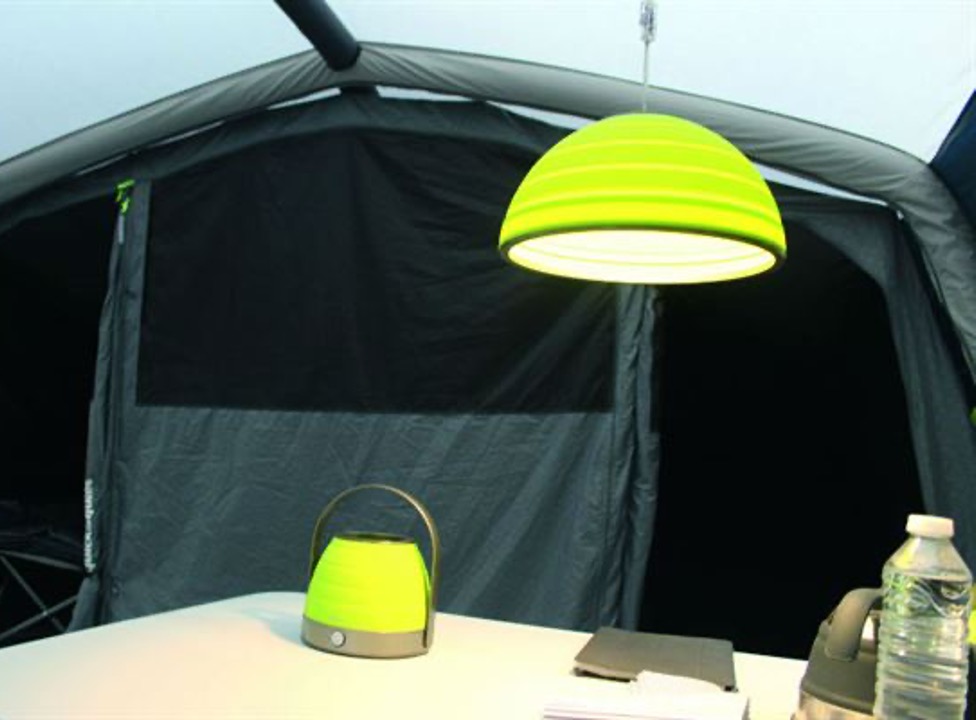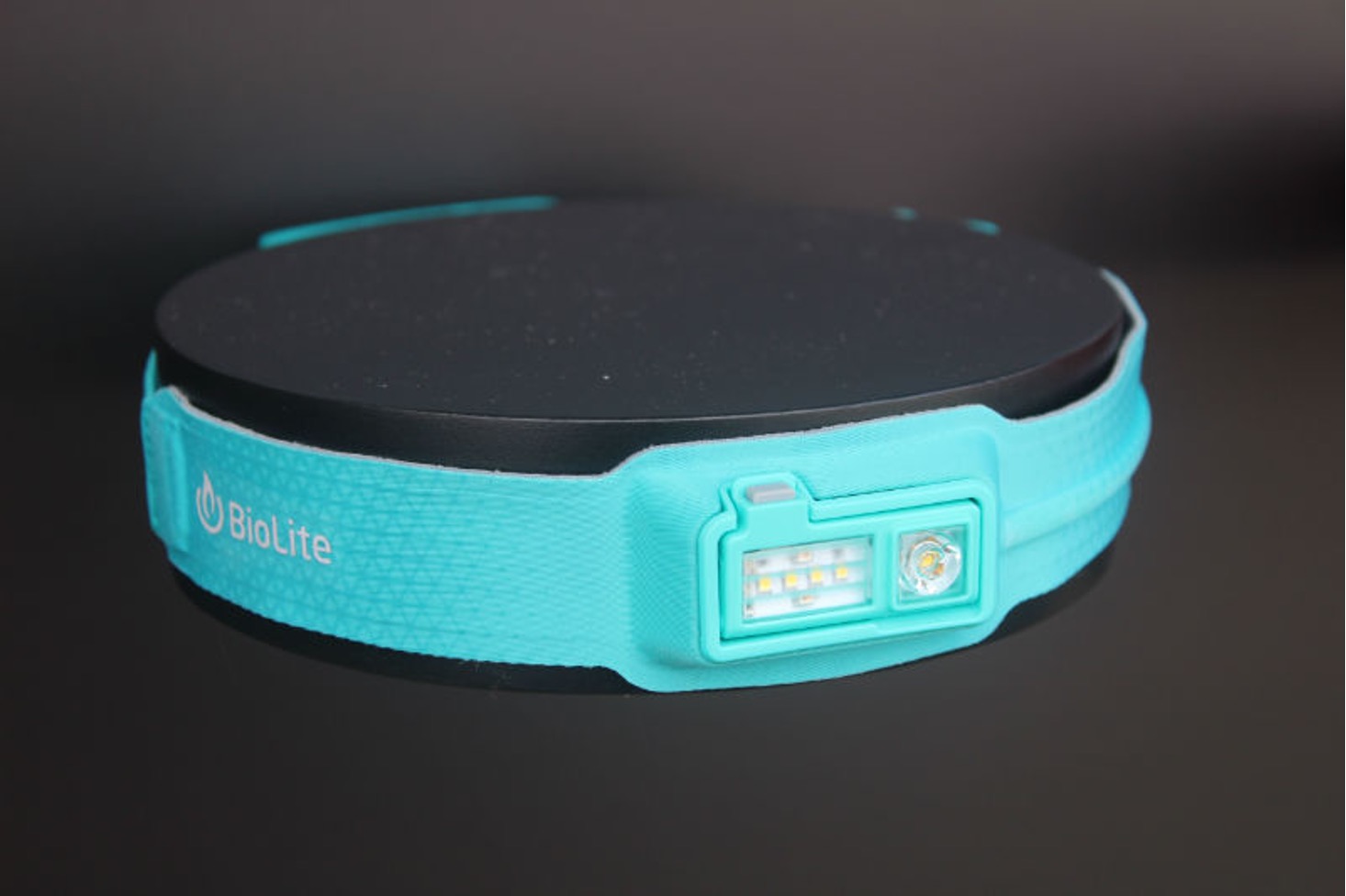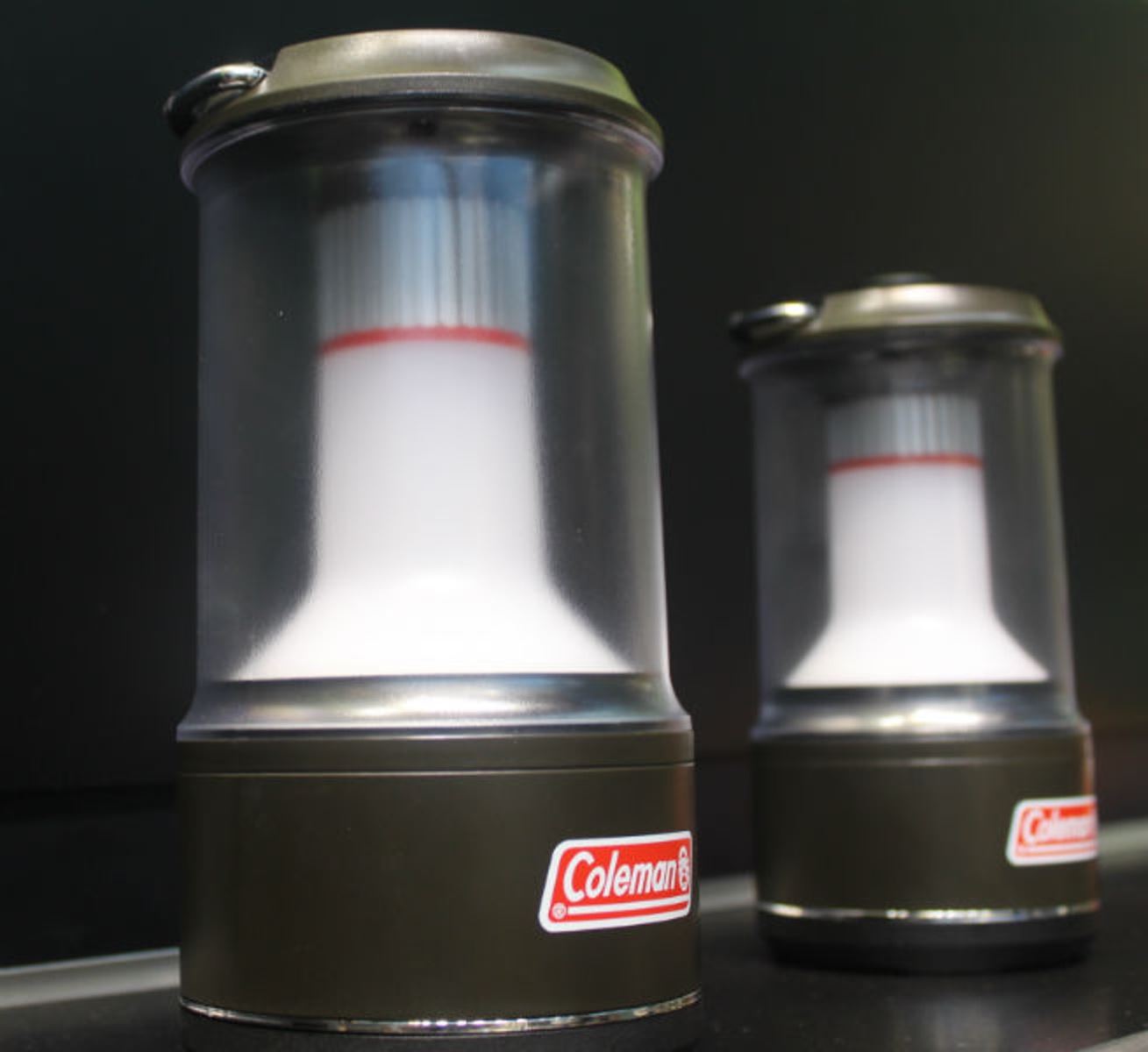Camping lights for tents: What you need to know
A good light source is an essential part of your camping kit, both for navigating the campsite in the dark and for comfortable tent living in the evening
Setting up your family tent is about creating a home from home on the campsite and one crucial aspect of that is your lighting set-up.
We will guide you through all the lighting options available for you and your tent, including interior lighting, torches, lanterns, light kits and power options.
Page contents
- What kind of lighting do you need?
- Types of camping lights
- Top tips
- Final thoughts
- About our magazines
Words by Iain Duff
What kind of lighting do you need?
Don’t even contemplate leaving home without at least a torch, either a handheld flashlight or a headtorch. We’d recommend at least one bright lantern for the tent’s living area and one lamp for each sleeping area.
Area lighting

(Photo by Iain Duff)
Area lighting provides wide pools of light that illuminate large areas of your tent. Having a couple of lanterns – one for ambient light for eating and socialising and a brighter one for cooking – are more useful than continually moving one around your pitch. Rechargeable battery-powered lights are safer than gas or liquid-fuelled lanterns but need to be kept charged to avoid frustration.
Electric lights, if you’re hooked up to the mains, may be the best option overall. Many tent brands offer purpose-built accessories to fit their ranges. Vango, for example, uses its own SkyTrack system to which you can attach various items, including LED lighting, and Outwell’s award-winning Nightlight System provides ambient LED lighting in some of its tents.
Personal lighting
Focused beams of light from a torch are useful for individuals moving around in the dark, especially to the site utility block, and exploring. A wind-up handheld torch makes sense for youngsters and avoids having to buy wholesale cases of batteries.
Most people have torches on their mobile phone these days, but there’s something that’s extra-comforting about having a handheld torch close to hand on your camping adventures. There’s a safety aspect to carrying a torch with you at all times, too. A bright or flashing light setting can let others know of your whereabouts.
Task lighting
A headtorch leaves hands free for food preparation and delivers light exactly where you need it. Similarly, they direct a focused beam for reading if others are asleep and leave your hands free to hold your book or pour a drink.
Exterior lighting
Exterior lights can also enhance your outdoor space for evening activities. Battery-powered lanterns are ideal for this purpose. You could also consider using strings of lights and solar lamps that go into the ground around your pitch, to give your tent a ‘glamping’ feel.
Brightness and colour
Tailor the brightness of your lights to specific areas in your tent. Higher wattages are suitable for task-oriented spaces like the kitchen, while softer lighting is ideal for relaxation zones such as the lounge and bedrooms.
Consider the colour temperature measured in Kelvins; 3,500K offers a warm daylight vibe, while 5,500K and above provides a clearer, cooler light.
Types of camping lights
LED lights

(Photo by Iain Duff)
No matter the type of lighting you require, the chances are you’ll go for LEDs. Compared to traditional bulbs, they are more energy efficient and longer lasting, more compact and more durable. LEDs can be found in all sorts of camping lights, from headtorches to mains-powered lanterns that can light up your tent all night long.
Electric lighting
Electric lanterns can run off the 230V electric hook-up and provide a steady and reliable light source for your tent. Electric lanterns are simple and easy to use without the fuel challenges of gas or liquid fuel lights and don’t run the risk of batteries running out at crucial times. The benefit of a lantern is that it is free-standing, so it will easily sit on a table whether you’re enjoying dinner, having a drink or playing a game of cards.
Lanterns come in many shapes and sizes – even collapsible silicone ones. Look for lanterns with various light settings so you have the choice of bright lighting through to mood lighting. Some lanterns even have an inbuilt Bluetooth speaker and some have mosquito killer components built in.
Battery-powered lanterns

(Photo courtesy of Coleman)
Portable camping lighting used to be powered by replaceable batteries, but batteries are not very good for the environment and need to be disposed of correctly. Alkaline batteries are pretty cheap and dim slowly, giving you warning that your light source is running out of power, but it’s easy to get through a lot of them.
Longer-lasting than alkaline, lithium batteries are lighter but more expensive. Rechargeable nickel-cadmium (NiCad) batteries are more expensive initially but more cost-effective in the long run, even though they lose the ability to hold a charge over time. Rechargeable nickel metal hydride (NiMH) batteries are more environmentally friendly and cheaper than NiCads.
USB-powered lights
Most portable camping lighting now comes with an inbuilt battery, which is charged up through a USB cable.
If you have electric hook-up in your tent, you can plug devices in to charge overnight. Otherwise, buy a good-size power bank that you can charge up at home before setting off. Some USB lanterns also act as a mini power bank themselves, so you can use them to give your phone a boost if it’s running low.
Solar chargers are also available, but these need sun to work, so are less reliable in the UK.
Gas lanterns
Gas lanterns were once the only camping light source available and, while there are far more options on offer today, some traditionalists still prefer the warm glow from a gas light. Gas is also clean and efficient; easy ignition systems avoid fumbling and flare-ups with lighters and matches. Keep a spare LPG cartridge and mantle handy to avoid losing light at a critical point in, say, cooking.
Although any gas equipment is potentially dangerous, if it's used properly it should be perfectly safe. Manufacturers recommend that you shouldn’t use a gas lantern inside your tent because of the dangers of carbon monoxide poisoning and the potential for fire.
Liquid fuel lanterns
Coleman's liquid fuel lantern is a camping icon and can run on (very clean) unleaded petrol. As with paraffin-fuelled ‘hurricane’ lamps, the light is soft but powerful. The hissing sound as pressurised liquid fuel lanterns burn adds an extra nostalgic dimension to camp life and they’re easy to refuel.
Top tips
Here are a few important things about camping lighting to consider:
- It’s worth determining whether you want general, ambient lighting or something more direct, for example for reading
- If you have lots of lighting, do check that your campsite neighbours are OK with it
- Back-up power sources are not a bad idea, especially if you’re relying on standard batteries
- Maybe a variety is best? You can have too many lights, of course, but there’s no harm in packing an alternative or two, if you have the space
Final thoughts
Illuminate your camping experience wisely with a mix of personal, area, task, and exterior lighting. Prioritise safety with torches and headtorches, and consider rechargeable or electric options for convenience.
Tailor brightness to specific tent zones and opt for energy-efficient LED lights. Remember, variety is key, and having backup power sources ensures a well-lit and enjoyable outdoor adventure.
Expert Camping advice!

Camping magazine has been the voice of campers for over 60 years!
Camping is the UK's only magazine devoted to the wonderful world of life under canvas and the freedom it brings.
Every issue is packed with inspirational travel, the top camping sites to stay on, reviews of the latest tents, camping gear reviews, practical help and much more to help you get the most out of your camping adventures.
Want to know more about Camping magazine?
About Camping magazine








Recent Updates
Our family camping checklist: everything you need to pack
Sure, you’ve packed the tent and the sleeping bags – but what about slip-on shoes and glow sticks? These are the family camping essentials that you ...
Our guide to planning the perfect camping road trip
Roll down the window, pop on those shades and crank up the volume – it’s time for a road trip. Get ready for ...
Camping in Europe: our 12 top tips
If you’ve not camped in Europe before, there’s a few tips and tricks you’ll need to avoid some continental ...
Solar power for camping: all you need to know
Staying connected in the great outdoors is easier than ever with a solar charger – or is it? How reliable are ...
Wild camping kit list: everything you need for your next adventure
Make sure you’re ready for anything with this list of lightweight camping gear and clothing, including ...
Camping furniture: all you need to know to make your tent a cosy haven
We delve into the essentials of camping chairs, camping tables, and kitchen and bedroom furniture, ensuring ...
Camping kitchen: all you need to know
In the great outdoors, a well-equipped camping kitchen transforms mealtime into a delightful adventure ...
How to pack away your camping gear for winter
A complete guide to packing and storing your gear at the end of the season ...
Camping guide to trailers
Trailer stash or trailer trash? Being able to carry lots of other gear when you go camping isn’t such a bad ...
Winter camping: all you need to know to keep warm
Winter doesn’t have to mean the end of the camping season. With good preparation and the right gear, there’s ...
Other Articles
Camping toilets: a complete guide
If you are wild camping, camping off-grid or the campsite you book onto doesn’t have toilet facilities, you will need to consider alternative ...
Top tips for camping in windy weather
How to make sure your tent stands up to gusty conditions ...
Camping tents: a complete guide
If you're considering buying a camping tent, whether it's your first time or you're a seasoned camper, making ...
Camping sleeping bags and beds: a complete guide
When it comes to camping, there's one essential item that can make or break your outdoor adventure: the ...
Camping gas: how to use gas on the campsite
A complete guide to using camping gas appliances safely on the campsite, from choosing the right stove to ...
Camping storage: a complete guide
Having problems knowing where to put all your gear when you're camping? Read our top tips and see some great ...
Camping electric hook-up: a complete guide
This is everything you need to know about using electricity on a campsite, including how to hook up ...
How to pack all your camping gear into your car
Planning a family camping holiday? Find out the best way to fit all the kit you need into your car boot, roof ...
Camping stoves and cookers: the complete guide
Camping stoves are an essential part of any outdoor adventure, allowing you to prepare meals and hot drinks ...
How much does camping cost?
At a time when everyone’s budgets are being squeezed, camping holidays offer great value for money. Shop ...